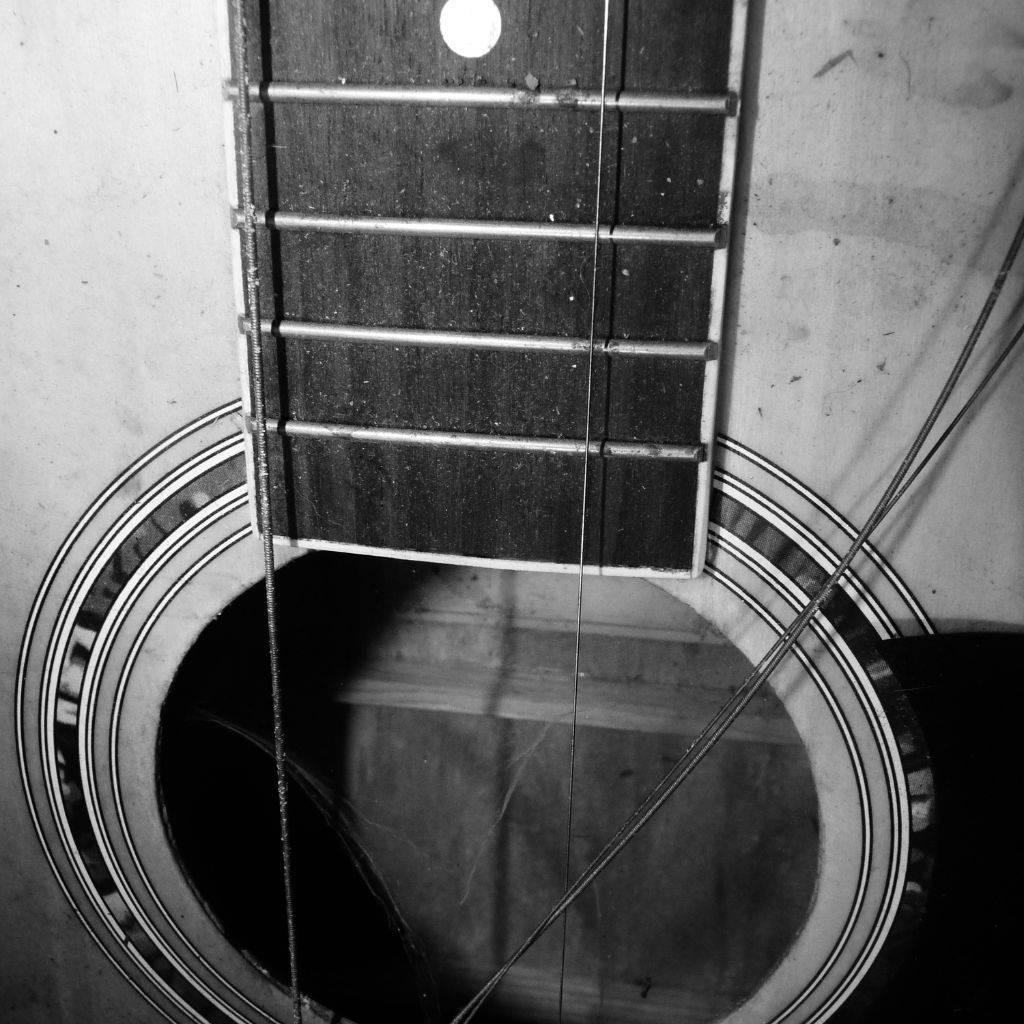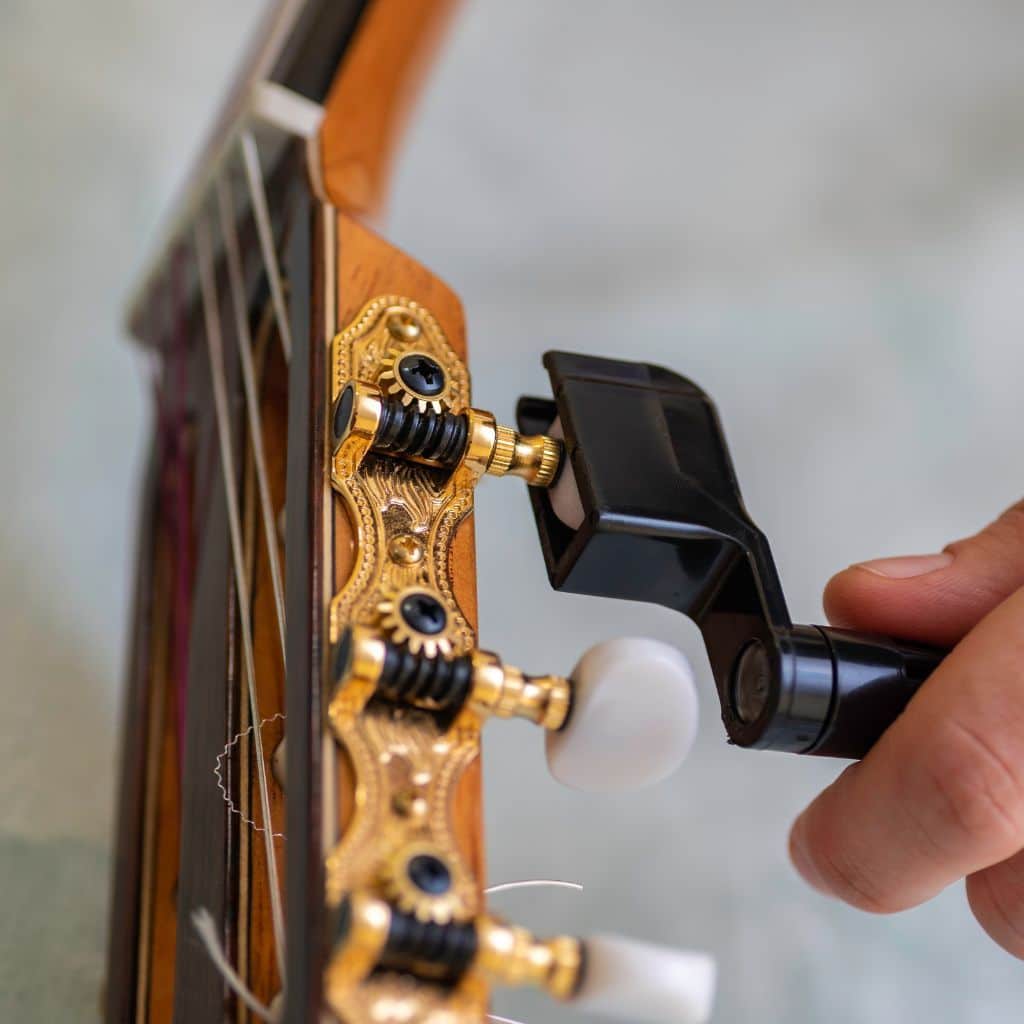Best
ACOUSTIC GUITAR STRINGS
-
Overall: The Strings Are Premium Quality And Tune Together Nicely With The Bass And Treble Frequencies
-
Best Feature: Medium-Light - 0.12-0.54
-
TedScore™: 9.5/10
Best
ELECTRIC GUITAR
STRINGS
-
Overall: Nickel-plated steel wrap wire provides a snappy attack and smooth sustain
-
Best Feature: Hexagonal steel core wire offers extra stability, greater reliability, and improved intonation
-
TedScore™: 9/10
Best
CLASSICAL GUITAR STRINGS
Pro-Arte Premium Classical Guitar Strings
-
Overall: Deliver full-range tone with precise intonation and great projection
-
Best Feature: Pro-Arte silver-plated copper basses use a multi-filament nylon core for warm-tone
-
TedScore™: 9/10
When I first picked up my guitar, I didn’t pay much attention to the strings. But now, after years of professionally playing the guitar, I know that they are fundamental to the sound and feel of the instrument.
Different guitar string types can dramatically alter your guitar’s tonal quality and playability. From steel to nylon, each variety offers a unique experience.
Brass strings, known for their brighter sound compared to bronze strings, are a blend of copper and zinc, adding brightness to an acoustic sound without overwhelming the overall mix.
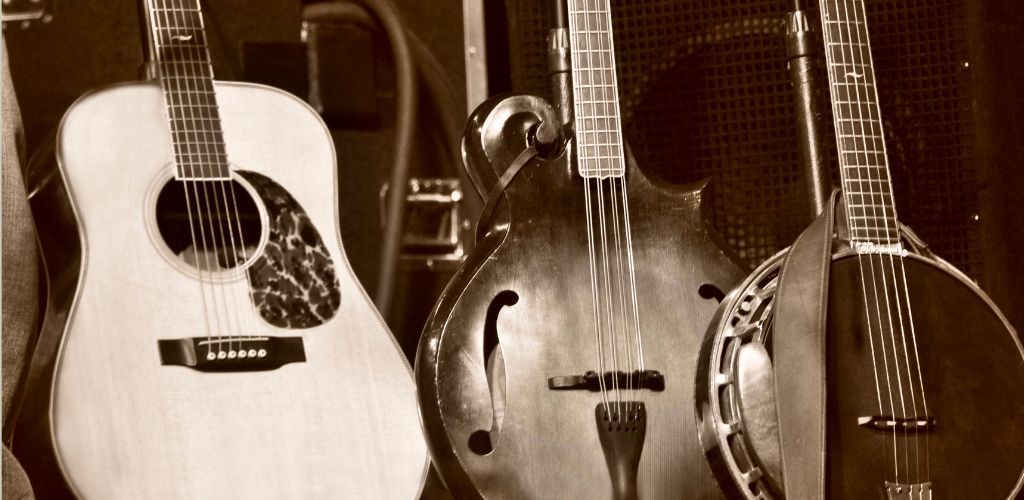
This poses a problem because how would you know which types of guitar strings suit your instrument?
Hundreds of guitar string brands offer hundreds of guitar string types, from hex core strings to round core strings to phosphor bronze strings.
Who would have thought that choosing strings could be this hard?
As a professional electric guitarist, I love using D’Addario’s XL Nickel Wound because of its versatile and bright tone. It’s the best electric guitar strings!
It didn’t take me long to realize the importance of choosing the right strings and caring for them. Your guitar’s longevity and performance depend heavily on this choice.
Fundamentals of
Guitar Strings

When I first picked up a guitar, I quickly learned that strings are the heart of its sound.
Let’s learn what they’re made of and how they work, from the materials they’re made of to the various gauges and tensions.
Materials and Composition
Guitar strings come alive through their materials.
Steel strings shimmer with brightness, resonating with a crisp, metallic edge.
Nylon strings, often on classical guitars, deliver a softer, mellower tone.
Nickel strings are popular in electric guitars and prized for their balanced sound.
Bronze strings, especially the 80/20 blend, sing with a bright, ringing clarity.
Phosphor bronze adds a hint of warmth and durability.
Pure nickel strings are a classic; they take me back with a smooth, warm vibe that’s pure nostalgia.
Flatwound strings have a smooth surface and produce a dark, mellow tone, making them popular among jazz guitarists.

String Gauge and Tension
String Gauges
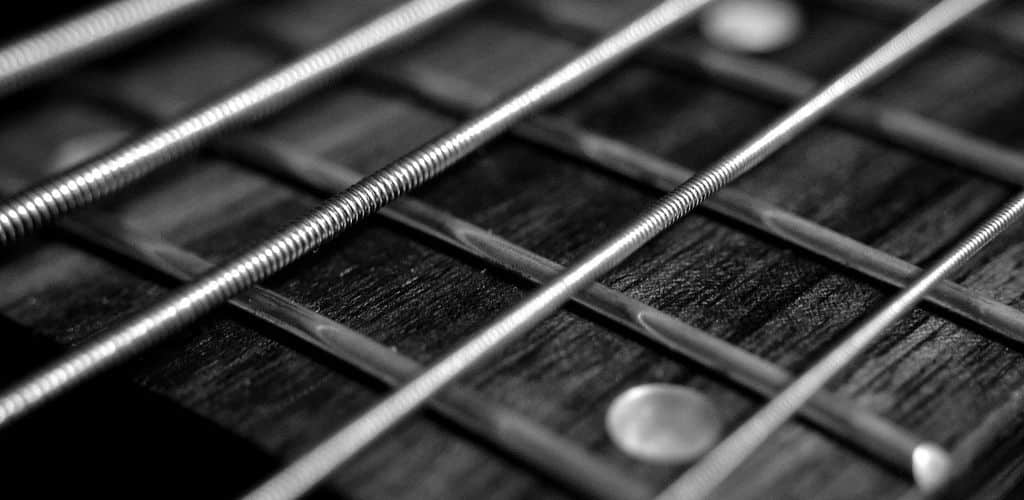
There is also a thing called a guitar string gauge.
Light gauge strings like .009’s offer ease of play, ideal for bending those bluesy notes.
Heavy gauge strings strike back with more volume and sustain, their tension demanding a firmer hand.
String Tension

The choice of string tension often compromises the sound you want to hear and your physical comfort while playing.
High-tension strings typically require more finger pressure to fret and bend notes but can provide more volume and a brighter tone.
Lower-tension strings are easier to play but may produce less volume and a mellower tone.
Core Types and Winding Methods
String Core Types

Now, let’s talk about guitar string cores.
Round string core whispers tales of tradition, delivering a more flexible feel and vintage sound.
Hex cores are the modern standard—I find them gripping the winding tighter for a focused, consistent tone.
String Winding Type

When talking about winding-type methods, it can be:
Roundwound strings: The most common type, where a round wire is wrapped around a round or hexagonal core, giving a textured feel and a bright sound.
Flatwound strings: A flat wire is wrapped around the core, resulting in a smoother feel and a mellower, less bright tone, which jazz players often prefer. However, their stiffness and tonal qualities can be challenging in fast-paced genres like rock and metal.
Halfwound (or groundwound): These strings are a compromise between roundwound and flatwound, where roundwound strings are partially flattened to reduce finger noise and provide a smoother feel without losing as much brightness.
Coating
When it comes to extending the life of your guitar strings, coated strings are a game-changer. Coating refers to a thin layer of material applied to the surface of the guitar string to enhance its performance and longevity.
Nanoweb: This thin, polymer-based coating provides a smooth playing feel and significantly reduces finger squeak, making your playing experience more enjoyable.
Polyweb: A thicker, polymer-based coating that not only extends the life of your strings but also imparts a warmer tone, perfect for those who prefer a richer sound.
Elixir: Known for their proprietary coating, Elixir strings offer a long-lasting, corrosion-resistant barrier and a smooth playing feel, making them a favorite among many guitarists.
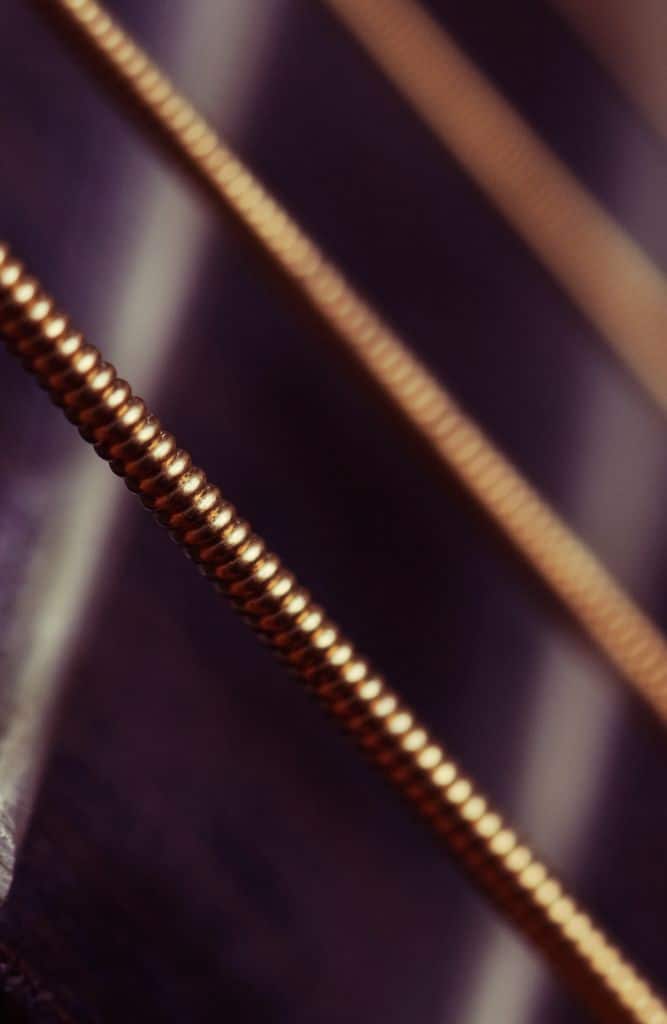
Coated strings are designed to provide several benefits:
Longer string life: Thanks to their resistance to corrosion and wear, coated strings can outlast uncoated strings, saving you from frequent replacements.
Improved tone: Many players find that coated strings offer a warmer, more balanced tone, enhancing the overall sound of their guitar.
Reduced finger squeak: The coating helps minimize the noise produced by your fingers sliding along the strings, resulting in a cleaner sound.
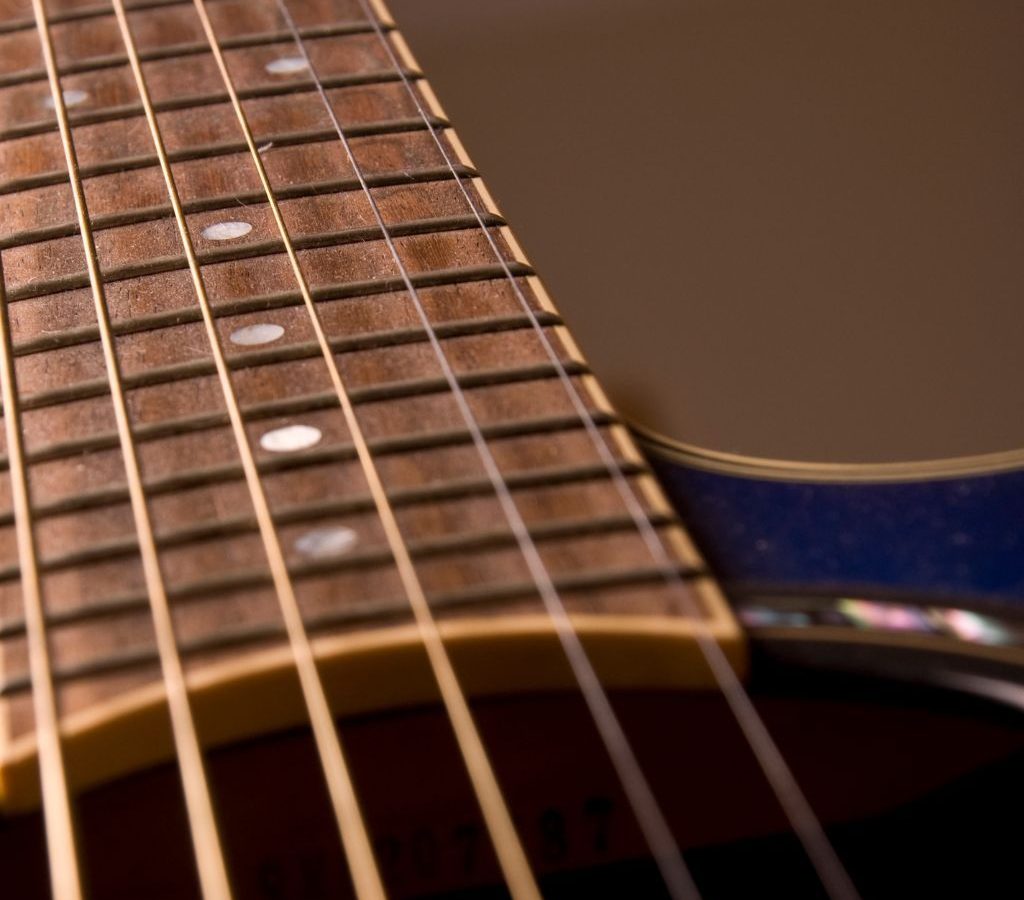
Higher cost: Coated strings are generally more expensive than their uncoated counterparts, which might be a consideration for budget-conscious players.
Reduced brightness: Some players feel that coated strings produce a slightly duller tone compared to uncoated strings, which might not suit every musical style.
In summary, coated strings can be a great investment for those looking to extend the life of their strings and enjoy a smoother playing experience. However, it’s essential to weigh the benefits against the potential drawbacks to determine if they’re the right choice for you.
String Types by Guitar
When I think about guitar strings, I often consider how they’re the instrument’s soul, vibrating to produce those melodies we love.
Each guitar type has its own unique set of strings that bring out its character.
Electric Guitar Strings
I can tell you that the strings for electric guitars are typically made from metal alloys, like nickel-plated steel, which give you that punchy rock ‘n’ roll sound.
You’ll often find these electric strings in various gauges, affecting playability and tone.
The lighter strings are easier to bend, while the heavier ones provide fuller guitar sounds.
The D’Addario EXL110 XL Nickel Wound Electric Guitar String offers a balanced blend of brightness and warmth with comfortable playability that suits various playing styles. For me, these are the best guitar strings an electric guitar player could have.
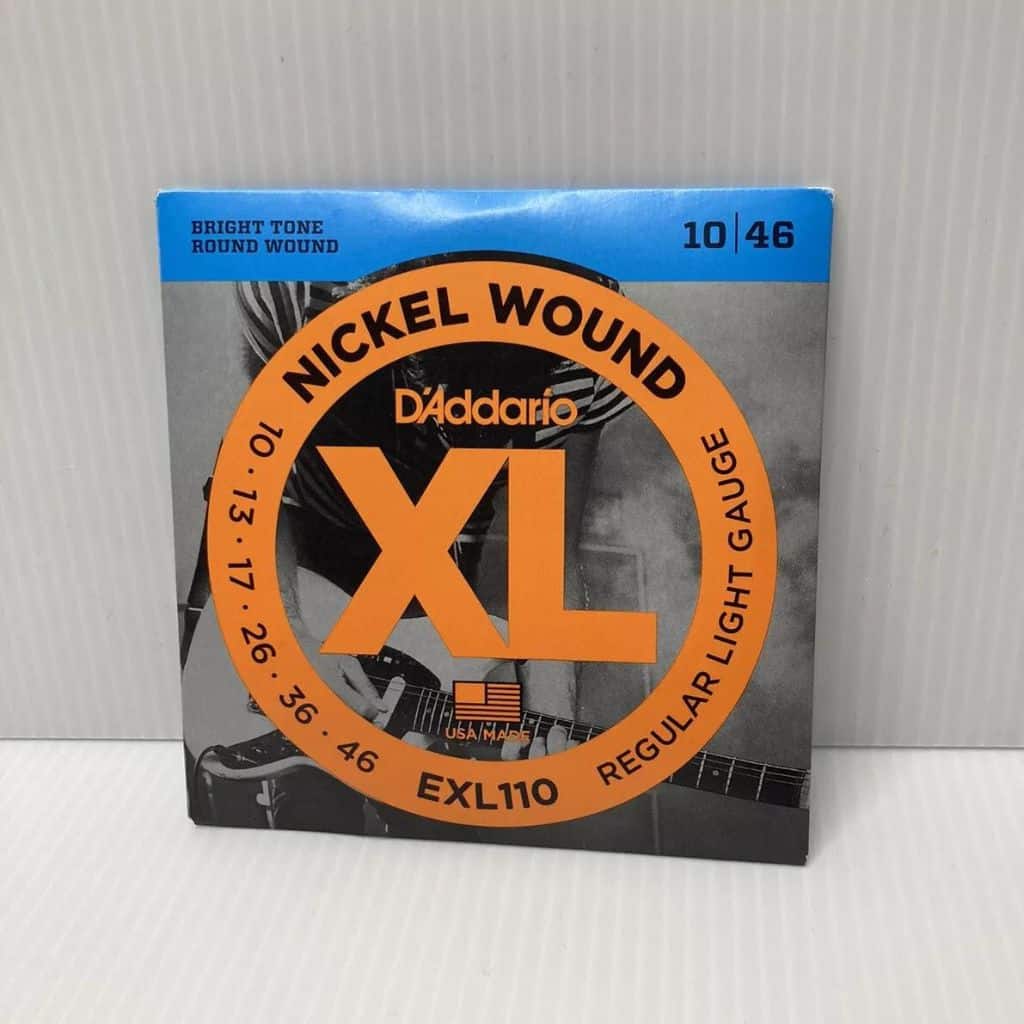
D'Addario EXL110 XL Nickel Wound Electric Guitar Strings
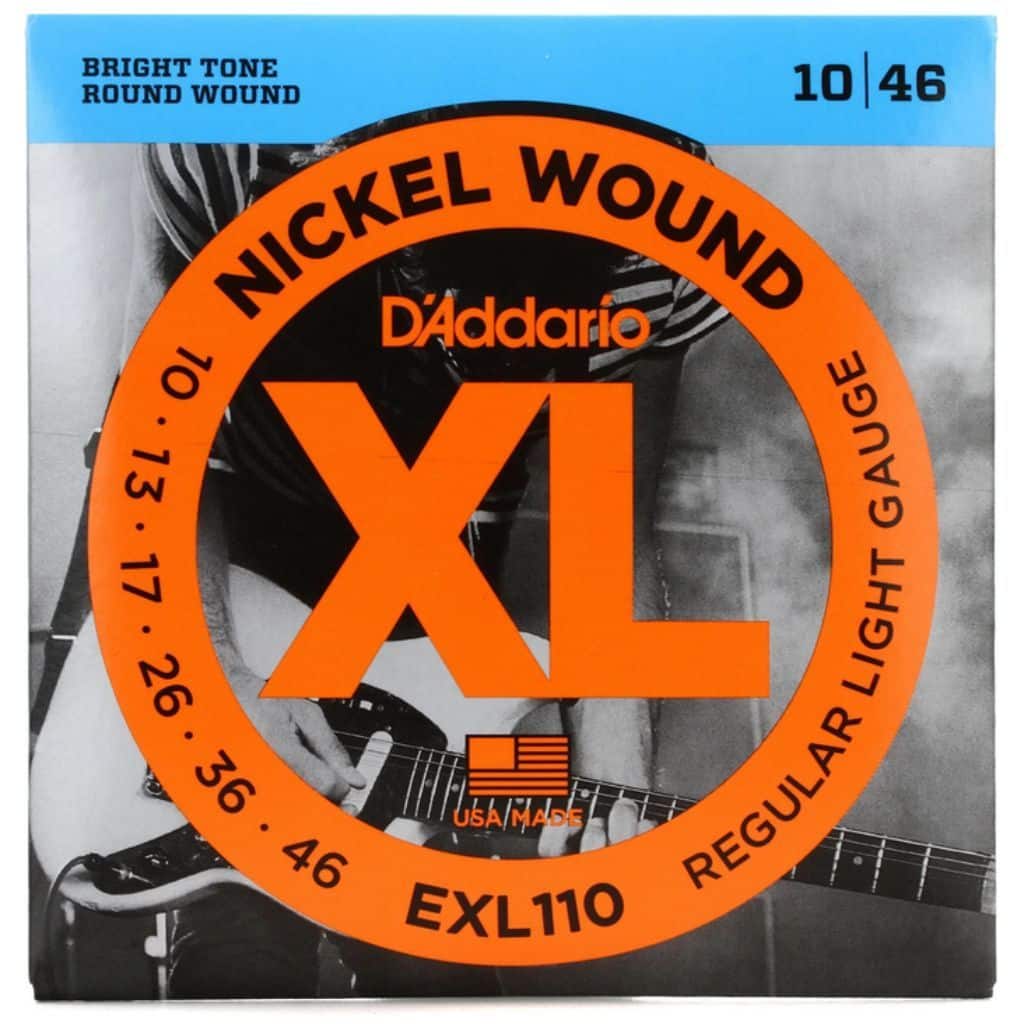
FEATURES: Nickel-plated steel wrap wire provides a snappy attack and smooth sustain
OTHER INFO: Hexagonal steel core wire offers extra stability, greater reliability, and improved intonation
- Corrosion-resistant packaging keeps strings fresh in storage
- Color-coded ball ends make it easy to change and replace strings
- None!
When you click ‘Check Price’, you’ll see there are loads of great places to buy this item. Our personal favorite is Sweetwater for the US, and Thomann and Gear4Music for the UK & Europe.
They are the largest music retailers, with excellent customer service, competitive prices, really fast shipping, and the longest guarantees.
The professional musician who wrote this article combined many things,
from the product build, manufacturer’s reputation through to feedback
from other users, to create our famous TedScore™.
Acoustic Guitar Strings
Now, acoustic guitar string types have a different story.
The standard acoustic guitar string is generally made of steel but wound with materials like bronze or phosphor bronze, which warmly resonate with the guitar’s wood.
Brass strings, composed of a blend of copper and zinc, offer a brighter sound compared to bronze strings. They are suitable for certain guitar types and music styles by adding brightness to an acoustic sound without overwhelming the overall mix.
There’s even a variety known as coated strings. These have a thin layer of polymer to prolong the life of the thicker strings by protecting against the oils and sweat from my fingers.
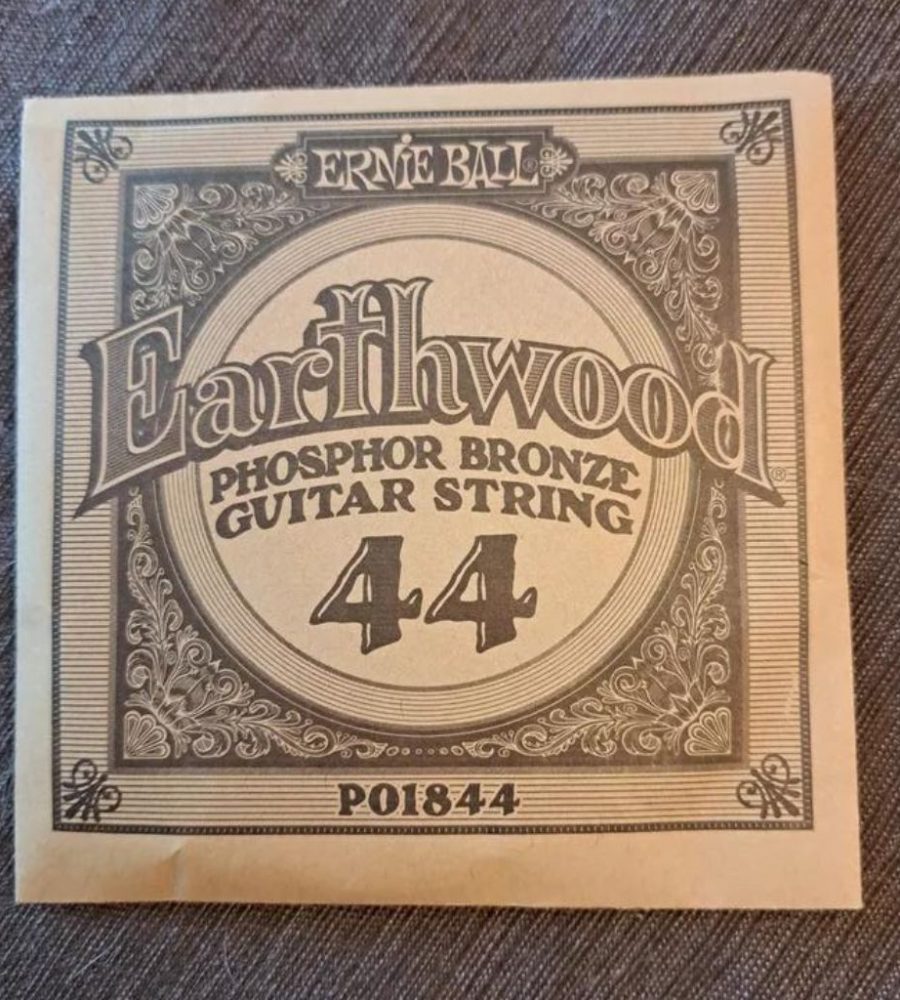
The Ernie Ball Earthwood Phosphor Bronze acoustic guitar strings deliver a rich, warm, and resonant tone with excellent clarity and sustain.
They are my go-to choice for their durability and consistently vibrant sound.
Ernie Ball Earthwood
Phosphor Bronze
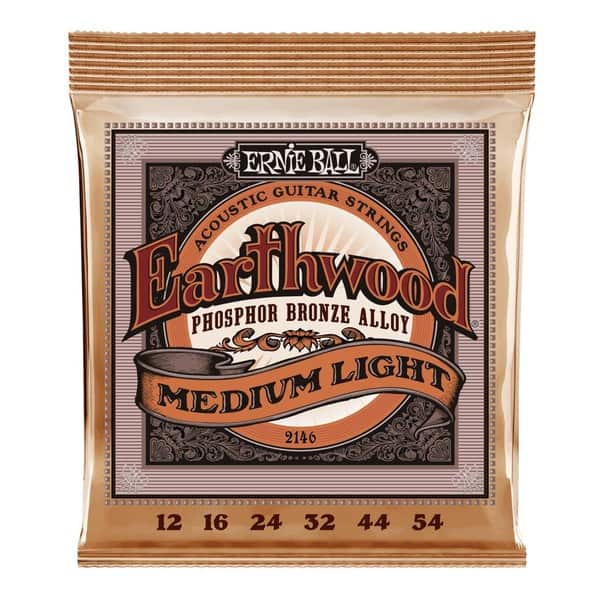
BEST OPTION FOR: Guitarists who like to solo on acoustic guitar
STRING GAUGES: Medium-light - 0.12-0.54
FEATURES: The strings are premium quality and tune together nicely with the bass and treble frequencies
Ernie Ball Earthwood
Phosphor Bronze
- Rich, warm, and clear tone
- Great for solo performances
- The strings come in medium and light gauges
- The strings can snap easily
When you click ‘Check Price’, you’ll see there are loads of great places to buy this item. Our personal favorite is Sweetwater for the US, and Thomann and Gear4Music for the UK & Europe.
They are the largest music retailers, with excellent customer service, competitive prices, really fast shipping, and the longest guarantees.
The professional musician who wrote this article combined many things,
from the product build, manufacturer’s reputation through to feedback
from other users, to create our famous TedScore™.
Classical Guitar Strings
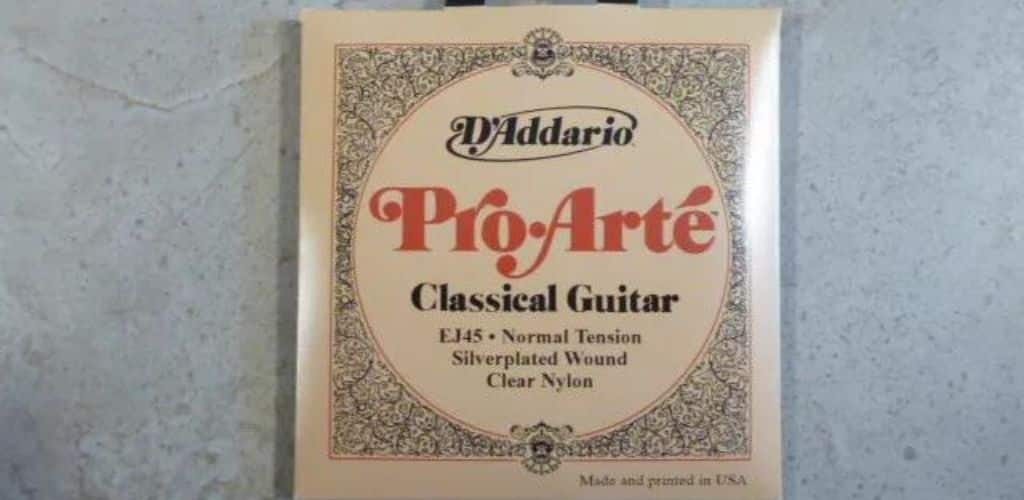
The classical guitar, also known as the nylon string guitar, has mellow, rich tones due to its nylon strings.
The bass strings are nylon filament wound with silver-plated copper, while the treble strings are pure nylon. These classical guitar strings provide a softer feel than steel string acoustic guitars, ideal for the fingerpicking classical and flamenco players adore.
D'Addario EJ45 Pro-Arte Classical Guitar Strings - Normal Tension

DESIGNED FOR: Classical guitarists
FEATURES: Deliver full-range tone with precise intonation and great projectiony
OTHER INFO: Pro-Arte silver-plated copper basses use a multi-filament nylon core for warm-tone
D'Addario EJ45 Pro-Arte Classical Guitar Strings - Normal Tension
- Gives you a rich tone and dynamic projection
- None!
When you click ‘Check Price’, you’ll see there are loads of great places to buy this item. Our personal favorite is Sweetwater for the US, and Thomann and Gear4Music for the UK & Europe.
They are the largest music retailers, with excellent customer service, competitive prices, really fast shipping, and the longest guarantees.
The professional musician who wrote this article combined many things,
from the product build, manufacturer’s reputation through to feedback
from other users, to create our famous TedScore™.
Choosing and Caring
for Your Strings
Let me guide you through the selection process and show you how to keep those strings sounding fresh.
Selecting the Right Strings
I always start with the question: electric, acoustic, or classical guitar?
Electric guitar players like me typically use nickel-plated steel strings for a crisp, bright sound, while my acoustic guitar prefers strings like phosphor bronze for a warm, deep resonance.
Classical guitars? They’re special—they need nylon strings to produce that traditional, mellow tone.
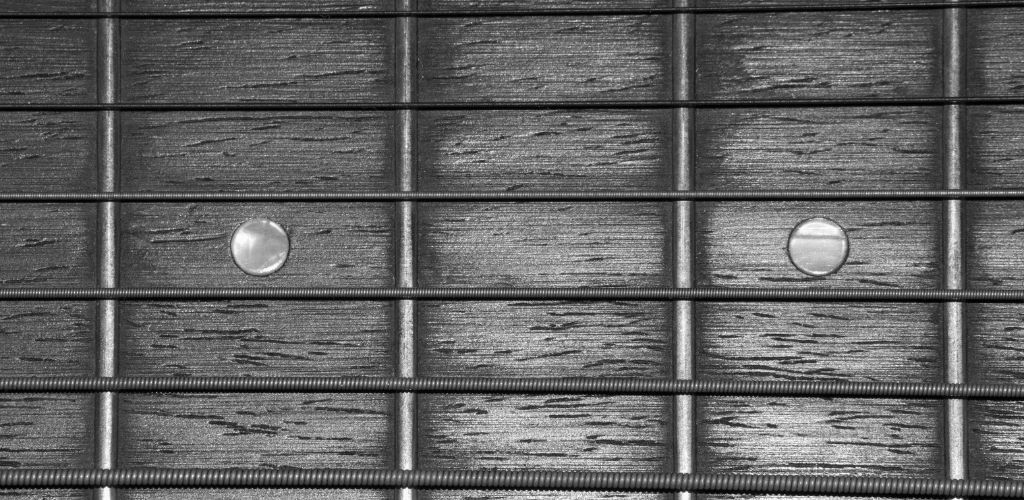
Now, string gauge is where personal preference plays a part.
Do I play some plucking for folk music? Then, I’ll go for light gauge strings for playability.
If I’m into the blues or rock with a heavy strumming style, I might lean towards a medium to heavy gauge to keep up with my powerful playing.
Top brands like D’Addario and Ernie Ball offer a variety of gauges that I often experiment with to find my sweet spot.
Playing Style and Musical Genre Considerations
Choosing the right guitar strings isn’t just about the material or gauge; it’s also about matching your strings to your playing style and musical genre.
Different styles and genres require different types of strings to achieve the best sound and playability.
For those heavy riffs and powerful solos, heavy-gauge metal strings are often the go-to choice. They provide a bright, aggressive tone and plenty of sustain, perfect for cutting through the mix in a band setting.
If you’re into jazz or classical music, lighter-gauge strings are your best bet. They offer a warm, mellow tone and a smooth playing feel, ideal for intricate fingerpicking and complex chord progressions.
Acoustic guitarists often prefer nylon or synthetic strings for their warm, balanced tone and smooth feel. These strings are perfect for genres like folk, country, and soft rock, where a rich, resonant sound is key.
Medium-gauge strings strike a balance between playability and tone, making them a popular choice for blues and folk musicians. They provide a balanced tone and a smooth playing feel, allowing for expressive bends and slides.
By considering your playing style and the genre of music you play, you can select the guitar strings that will best complement your sound and enhance your performance.

Maintenance and Replacement
Taking care of my strings is crucial for them to take care of me during a performance.
A good habit is to wipe them down with a clean cloth after playing—this helps to remove oils and grime.
I sometimes use some string cleaner, which cleans and prolongs the strings’ life with a protective coating.
When should I replace them, you ask?
Signs like a dull tone, intonation issues, or visible wear and tear tell me it’s time. My rule of thumb is to replace them every three months, but heavy play might demand more frequent changes.
I’m looking at low-tension strings for my brightly-toned flamenco guitar. Due to their delicacy, they tend to require more frequent swapping.
Remember, consistent maintenance and timely replacement perfectly harmonize me and my guitar!
How to Change Your Guitar Strings
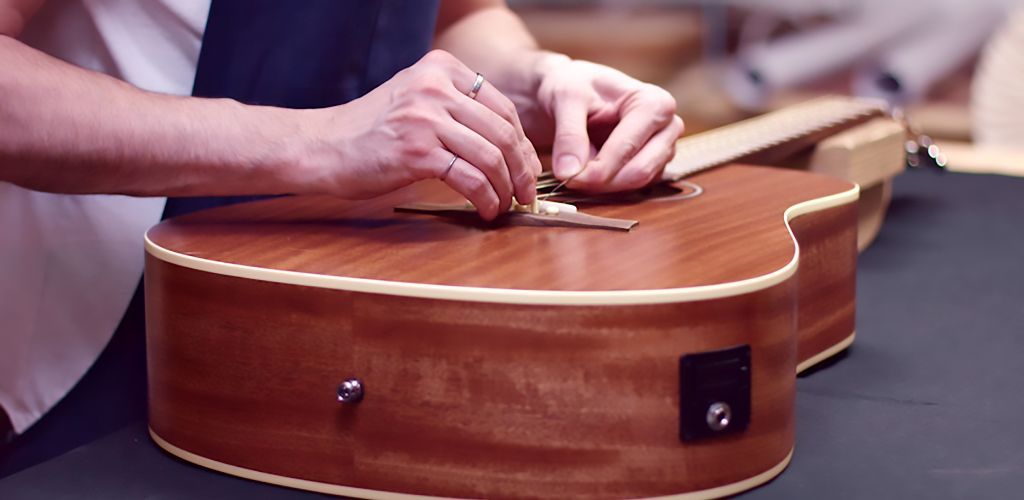
Changing your guitar strings might seem daunting at first, but with a little practice, it becomes a straightforward task. Here’s a step-by-step guide to help you through the process:

Gather Your Materials:
You’ll need a new set of guitar strings, a string winder, and a pair of wire cutters.
Remove the Old Strings:
Start by loosening the old strings, removing them from the bridge, and tuning pegs. Be careful not to scratch your guitar.
Clean the Guitar:
Use a soft cloth to clean the guitar, paying particular attention to the bridge and fretboard. This is a great opportunity to remove any built-up grime.
Install the New Strings:
Begin with the low E string and work your way up to the high E string. Insert the string through the bridge and pull it tight.
Wind the Strings:
Use a string winder to wind the strings around the tuning pegs, making sure they are wound neatly and securely.
Tune the Guitar:
Use a tuner to bring the strings up to pitch. It’s normal for new strings to go out of tune quickly, so you may need to retune several times.
With these steps, you’ll have your guitar strung up and ready to play in no time!
How Often to Change Your Guitar Strings
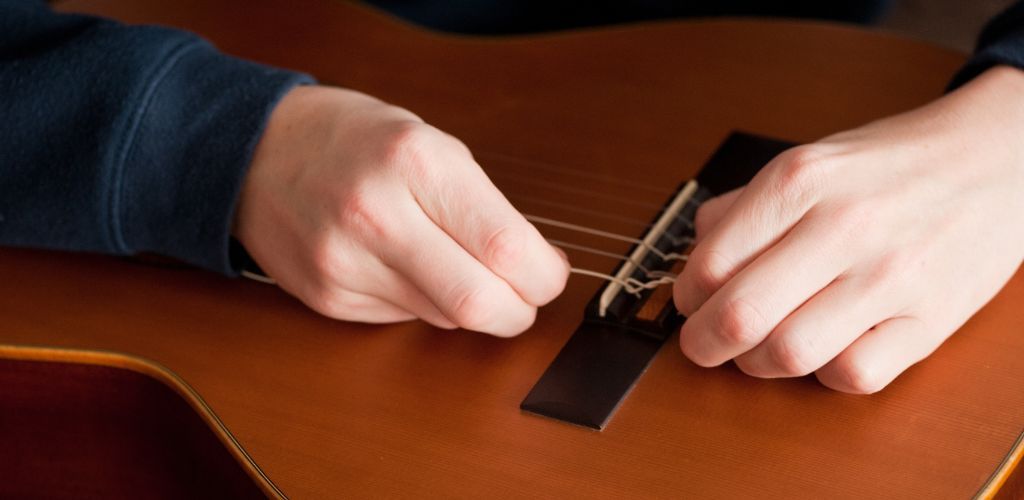
The frequency with which you need to change your guitar strings depends on several factors, including your playing style, the genre of music you play, and the climate you live in.
Playing Style: If you play aggressively or use a lot of string bending, you may need to change your strings more frequently. Heavy playing can wear out strings faster.
Musical Genre: Genres that involve a lot of string slapping or popping, like funk or slap bass, can also lead to more frequent string changes.
Climate: Humid or dry climates can affect the lifespan of your strings. In humid conditions, strings can corrode faster, while dry climates can make them brittle.
Personal Preference: Some players prefer the bright, crisp sound of new strings and change them frequently, while others are okay with the mellow tone of older strings.
As a general rule, it’s recommended to change your guitar strings every 3-6 months. However, this can vary based on your individual needs and preferences.
Pay attention to how your strings sound and feel, and change them when they start to lose their tone or playability.
Signs That You Need to
Change Your Guitar Strings
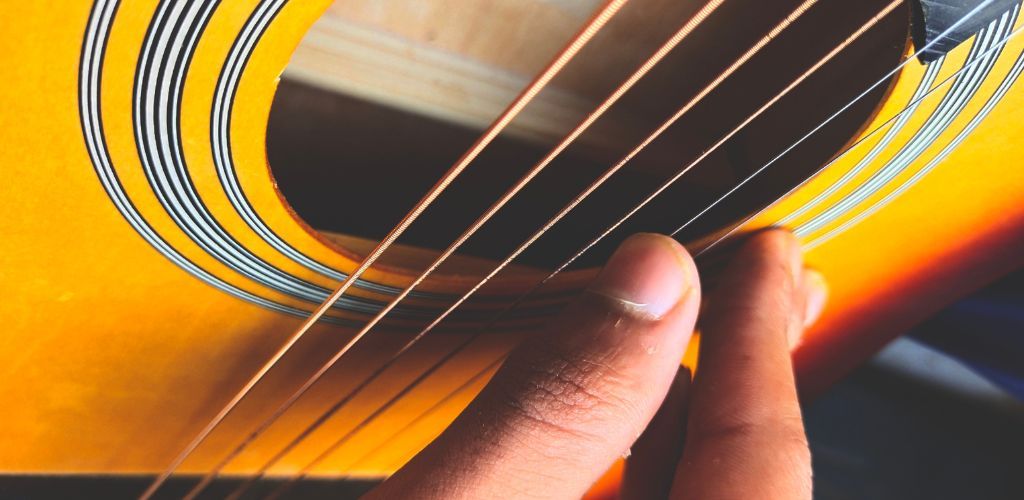
Knowing when to change your guitar strings is crucial for maintaining your instrument’s sound and playability.
Dull Tone: If your guitar sounds dull or lifeless, it’s a clear sign that your strings have lost their brightness and need replacing.
String Buzz: A buzzing or rattling sound when you play can indicate that your strings are worn out and need to be changed.
String Breakage: Frequent string breakage is a sure sign that your strings are past their prime and need to be replaced.
Corrosion: If you notice rust or corrosion on your strings, it’s time for a new set. Corroded strings can damage your guitar’s frets and affect your playing.
Playing Feel: If your guitar feels stiff or difficult to play, it might be due to old, worn-out strings. Fresh strings can make a world of difference in playability.
By looking for these signs, you can ensure that your guitar always sounds its best and is a joy to play.
Guitar String Types:
Things to Remember!
When it comes to guitar strings, I’ve noticed there’s a whole universe to explore!
Material-wise, we’ve got options like bronze, phosphor bronze, nylon, and steel – each with its unique vibe.
The gauge, or thickness of the strings, is another major player, affecting both playability and tone.
Lighter gauges: Easier on the fingers and bright in tone.
Heavier gauges: Require more finger strength but give a fuller sound.

I can’t stress enough how different materials affect the sound and feel. For example, classical guitarists often lean toward nylon for that traditional, mellow warmth. Meanwhile, electric rockers might prefer steel for that crisp, biting twang.
In essence, your choice boils down to personal preferences and playing style.
Whether you’re into soothing serenades or fiery solos, there’s a string that resonates with your music. Just remember that regular changes keep your tunes fresh and your fingers happy!
Wait! Just a couple more…
Now that you have an idea of the different types of guitar strings, you may want to read the next. In this article, you’ll discover the best guitar strings your guitar needs!
FAQ's
A standard six-string guitar typically has six strings tuned from the lowest pitch to the highest, such as E, A, D, G, B, and E.
These strings vary in thickness, with the low E being the thickest and the high E the thinnest, accommodating a range of notes for different musical styles and techniques.
The “best” guitar string material largely depends on the player’s preference and the style of music being played; common materials include nickel-plated steel for a balanced tone, pure or nickel-plated strings for a warmer sound, stainless steel for brightness and durability, and phosphor bronze for acoustic guitars to achieve a rich and warm resonance.
Experimenting with different materials can help you find the strings that best suit your playing style and desired sound.
For beginners, light to medium gauge metal strings are often recommended as they are easier on the fingers and facilitate easier fretting and bending.
Nylon strings for classical or lighter gauge steel strings for acoustic and electric guitars can help new players build finger strength and technique with less discomfort.
Yes, acoustic guitar strings significantly affect the instrument’s playability and sound.
The acoustic strings material, gauge, and construction can alter the guitar’s tone, sustain, and feel, thus affecting the overall musical expression and experience.




